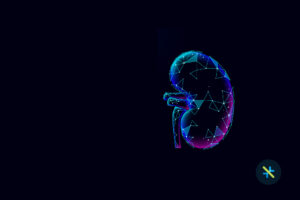The healthcare industry is challenged by a severe shortage of doctors, nurses, and other healthcare workers globally. It is a hard reality that only half of the countries across the world have enough healthcare staff to provide quality care. Recent studies show that America will face a shortage of up to 122,000 physicians by 2032.
During the peak period of the Covid-19 pandemic, it was a daunting task to get a doctor’s appointment. The healthcare providers at all levels were overburdened with the huge inflow of Covid patients. Patients with various health conditions had to wait to get healthcare advice and take the right decisions. Thanks to the widespread adoption of smartphones, AI-powered smart devices, and virtual assistants! As the situation demanded, healthcare providers were forced to redefine their digital adoption strategies. Conversational AI was widely recognized as one of the leading technologies, along with telemedicine, that drove digital adoption. Chatbots and virtual agents were developed and deployed with a minimal turnaround time to help relieve pressure on overworked healthcare workers.
Role of Conversational AI in Healthcare
Effective patient-provider communication is central to delivering high-quality health care. It defines the success of a healthcare business. Let us take a quick look at different types of patient engagement conversations that can happen between a patient and the provider:
Every single interaction of all these scenarios should be a positive interaction for the patient, else the healthcare provider stands to lose the patient or lose credibility. With all the conversational workflows mentioned above, healthcare providers’ staff (like physicians and support executives) are expected to be on the top of their game always to provide the best services to their patients. However, this expectation is a tall order and not possible for the provider staff to be always pleasing, empathetic, and consistent with patients and yet solve problems simply because of the volume, velocity, and variety of patient engagements.
Hence, this problem needs a hybrid model that is amply supported by the technology to deliver quality services to the patient, improve the turnaround time of issue triaging, and more importantly improve operation efficiency of provider operations. Hence, providers have started depending more and more on Conversational AI to help enable better patient engagements. Conversational AI powering Healthcare chatbots can serve the patient’s needs, respond to their questions in an empathetic manner, and provide appropriate support.
Conversational AI in Healthcare – Use Cases
Conversational AI and AI-driven virtual assistants empower healthcare providers with the ability to handle larger call volumes. They also enable healthcare providers to create personalized interactions with their patients, and thereby enhance digital health experiences. With Conversational AI, providers can handle asynchronous patient conversations where the patient can leave and return later to the conversation when they have time. Conversational AI solutions can be used to:
- Support healthcare provider’s staff in identifying the right department and the right physician in the hospital, based on the patient health symptoms
- Help manage emergencies and provide correct directions to troubled patients
- Enable automated offline conversations like SMS and emails in terms of following up with patients on their medication/treatment
- Facilitate easy scheduling of appointments for patients with their chosen physicians
- Allow provider’s staff to conduct surveys and help understand patient sentiments by integrating with other AI solutions
- Empower providers to connect with patients that speak different languages and keep them engaged.
- Improve post-treatment/care communications with patients
- Integrate easily with AI solutions to predict the probability of patient no shows and thereby arrest revenue loss
- Make delicate conversations on payments with patients easy
- Work as a research assistant for physicians, helping them with the right reading material to help them diagnose a problem
- Ensure better management of physician’s calendar
Five Prerequisites for Implementing Conversational AI in Healthcare
Conversational AI, if implemented correctly, can have a huge impact on the delivery of quality health care services, and benefit healthcare businesses. Healthcare providers must carefully consider various factors that can impact the user adoption of chatbots and unlock the true power of AI-enabled conversational healthcare. The following are 5 key prerequisites for implementing Conversational AI in healthcare:

1. Business Discovery
2. Patient-centric Data Platform
3. Data-driven Culture
4. Regulatory Compliance
5. Patient Confidentiality
Conclusion
Conversational AI platform is a quintessential tool for driving patient conversation and engagement It helps the provider’s staff in delivering quality healthcare services to patients, even in high volumes, with human-like empathetic conversations. Conversational AI solutions should never be thought of as a replacement for the healthcare staff. Healthcare cannot afford to become robotic, human touch is still vital and cannot be replaced. However, by rerouting all basic services to conversational AI solutions, provider staff can now have more time and energy to provide quality services to patients where their involvement is truly required. Moreover, the patient community today is aware of the influx of AI in many areas of healthcare. As long as they are receiving quality services, patients are ready to adopt and accept these technology changes. Hence, it would be prudent for healthcare providers to start adopting Conversational AI to improve patient conversations and engagement.
Author

Anand Subramaniam
Anand Subramaniam is the Chief Solutions Officer, leading Data Analytics & AI service line at KANINI. He is passionate about data science and has championed data analytics practice across start-ups to enterprises in various verticals. As a thought leader, start-up mentor, and data architect, Anand brings over two decades of techno-functional leadership in envisaging, planning, and building high-performance, state-of-the-art technology teams.









